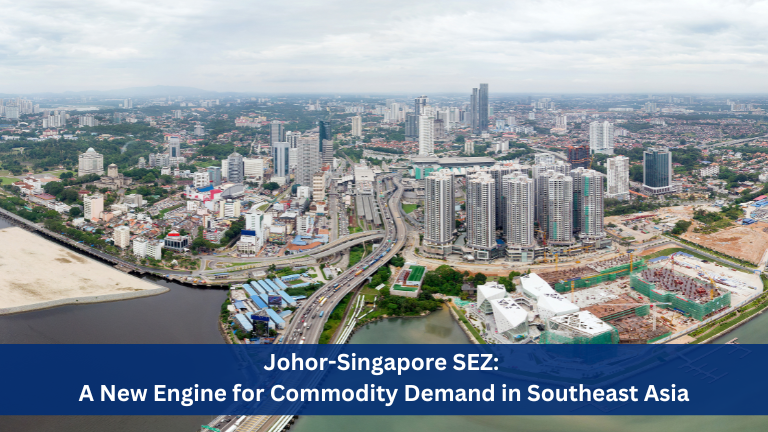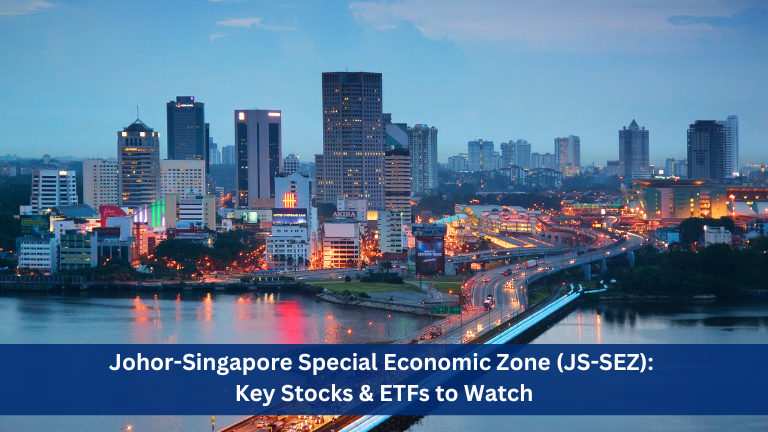By Wan Zuhao, Co-Founder, Inspirante Trading Solutions
Germany, Europe’s economic powerhouse, has consistently delivered impressive performance since the Global Financial Crisis (GFC) and the European debt crisis. This strong performance is rooted in Germany’s strong manufacturing sectors and robust export activities.
The country’s economic strength is exemplified by the DAX’s considerable outperformance of other European indices since the early 2000s. DAX (Deutscher Aktienindex) is a blue-chip stock market index comprising the 40 largest German companies traded on the Frankfurt Stock Exchange. Top constituents include internationally renowned firms such as SAP, Siemens, Allianz, Airbus, and Bayer. On the other hand, the STOXX50 index represents a much broader scope, encompassing 50 of the most liquid blue-chip companies in the Eurozone, including ASML, LVMH, and others.
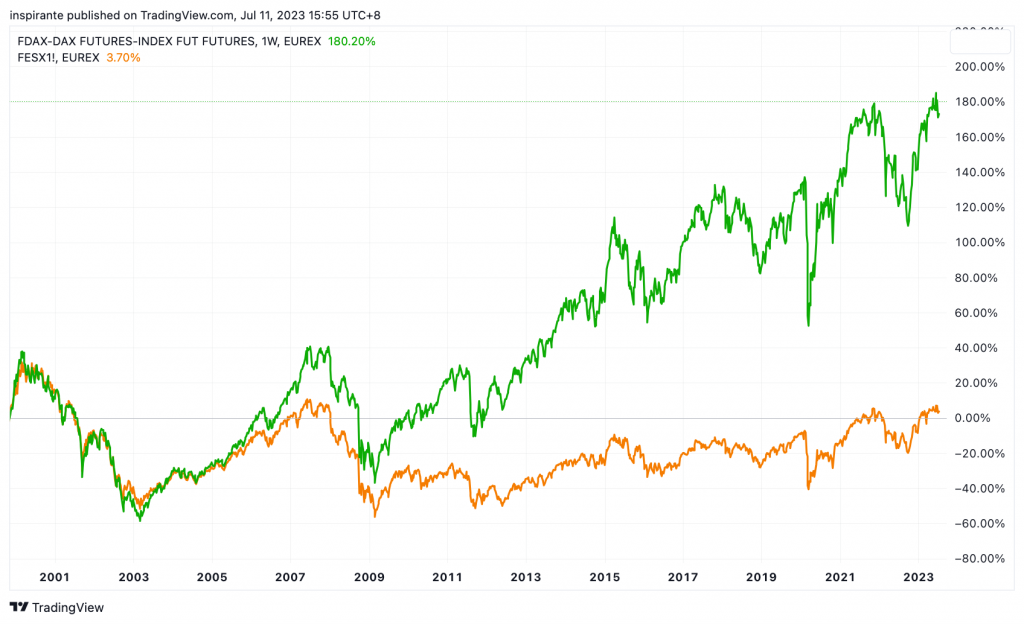
Since the dawn of the new millennium, the DAX index has surged by more than 180%, whereas the STOXX50 is only now approaching pre-2008 GFC levels. The DAX’s relative outperformance becomes evident when looking at the regression channel of the ratio between these two indices.
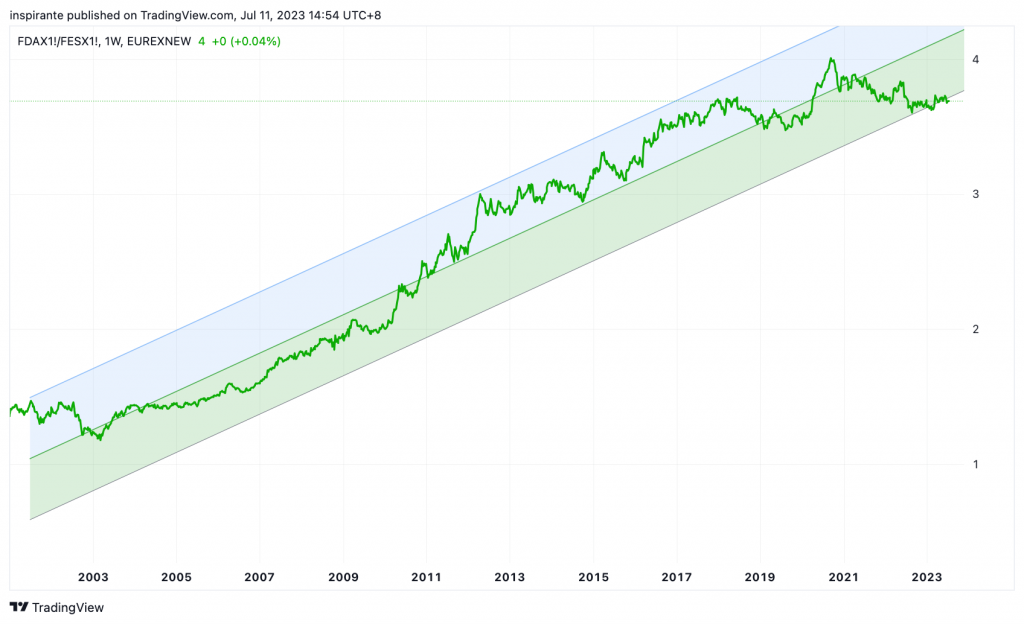
However, the prevailing narrative may be on the cusp of a significant shift. On a closer examination of the factors underpinning Germany’s superior performance, it emerges that sector weightings and macroeconomic conditions have played pivotal roles. Notably, the DAX has consistently underweighted financials as compared to the STOXX50 index.
Post-2008, the Eurozone’s interest rates have witnessed a consistent downtrend. This period of extraordinarily loose financial conditions and low bond yields, largely a by-product of Quantitative Easing (QE), has favored technology and growth stocks. The main drivers are the availability of cheap capital and a stronger emphasis on growth potential over current valuations. Conversely, the same conditions have exerted considerable pressure on financials, as their earnings capabilities have been seriously compromised. This is precisely why the European banking sector has lagged considerably behind its US counterparts and has yet to recover to pre-GFC levels.
This whole dynamics began to falter last year as inflationary pressures mounted, especially in European countries grappling with additional challenges, such as the Russian-Ukraine war and an energy crisis. The European Central Bank, following in the footsteps of the Federal Reserve and other central banks, finally embarked on a journey to raise interest rates, leading to one of the fastest-paced interest rate increases in modern history.
Furthermore, Germany’s export sector is encountering headwinds as the global economy edges closer to a potential recession, triggered by the tightening measures undertaken by central banks. Demand for products such as automobiles is likely to dwindle, particularly from major trading partners like China and the US. On the other hand, a healthier, more normalized yield curve is finally offering some respite to European financial institutions.
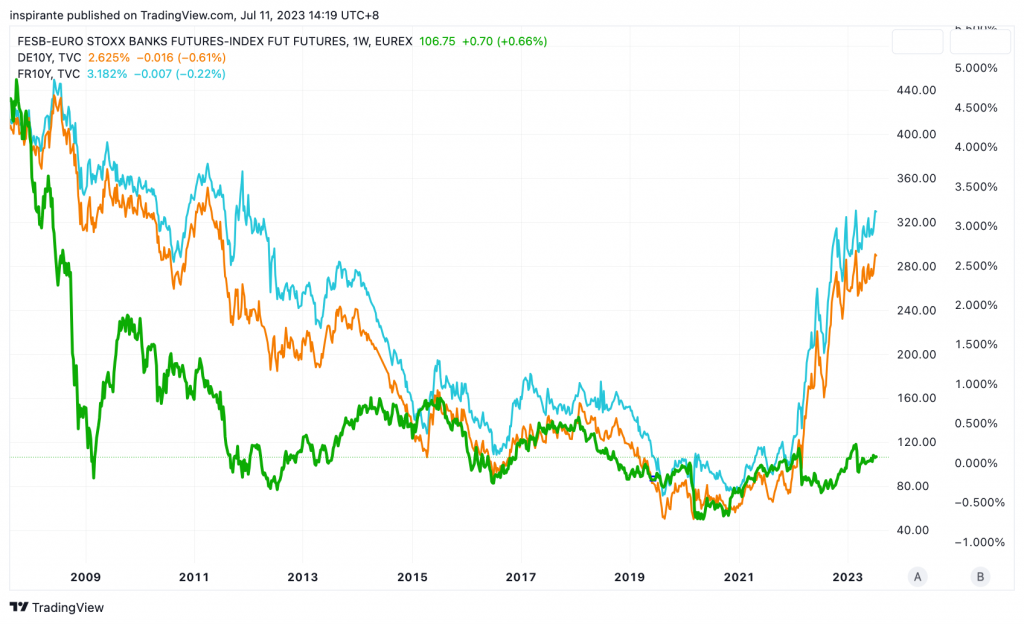
This shift could eventually curtail DAX’s persistent outperformance compared to other European indices like STOXX50. From a technical perspective, the price action also implies an impending change. The DAX/STOXX50 ratio has arguably completed a Head-and-Shoulder top and is currently sitting on the lower bound of the regression channel. A breakout to the downside could potentially signal the end of a two-decade-long uptrend, leading to a significant reversal in relative performance between DAX and STOXX50.
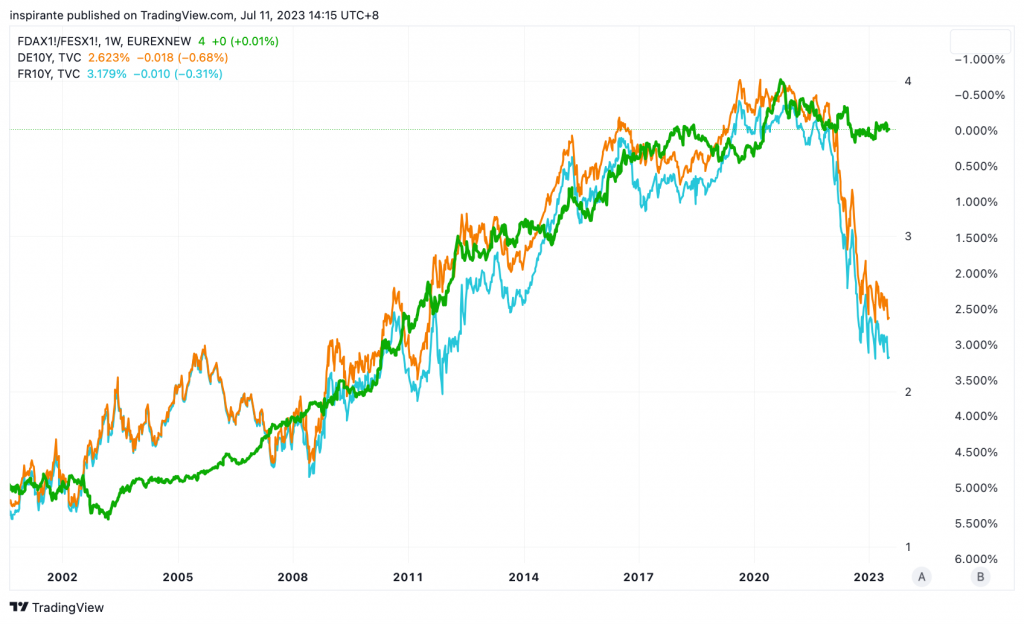
A hypothetical investor looking to express this view could consider establishing a short Micro DAX and long Micro STOXX50 spread at a notionally equivalent amount. The added advantage of this relative trade is that beta exposure is substantially reduced. For example, if a global recession causes most equity markets to decline, this relative trade could still benefit if the DAX falls more than the STOXX50.
Do note that a spread-trading strategy may incur additional commission fees versus a traditional outright strategy. Hot tip: Phillip Nova is currently offering zero-commission trading of the EUREX Micro-DAX® Futures and Micro-EURO STOXX 50® Futures. Click here to learn more.
To create a notionally equivalent DAX/STOXX50 spread, an investor might short 1 Micro DAX futures (EUR 1 per index point) and go long on 4 Micro STOXX50 futures (EUR 1 per index point). The notional amount of the Micro-DAX futures would approximately be 15,800 EUR. Meanwhile, the notional amount of the 4 STOXX50 futures would approximately be 4 x 4280 = 17,120 EUR. The margin required for each contract of Micro-DAX would be 1,588 EUR while the Micro-STOXX50 would be 380 EUR (as of 10 July 2023).
Trade Stocks, ETFs, Forex & Futures on Phillip Nova
Features of trading on Phillip Nova
- Gain Access to Over 20 Global Exchanges
Capture opportunities from over 200 global futures from over 20 global exchanges
- Trade Opportunities in Global Stocks
Over 11,000 Stocks and ETFs across Singapore, China, Hong Kong, Malaysia and US markets.
- Over 90 Technical Indicators
View live charts and trade with ease with over 90 technical indicators available in the Phillip Nova platform
- Trade Multiple Assets on Phillip Nova
You can trade Stocks, ETFs, Forex and Futures on a single ledger with Phillip Nova

